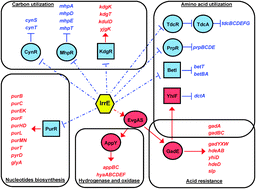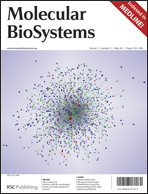Gram-negative bacterium Escherichia coli and the Gram-positive Deinococcus radiodurans fundamentally differ in their cell structures and gene regulations. We have previously reported that IrrE, a Deinococcus genus-specific global regulator, confers significantly enhanced tolerance to various abiotic stresses. To better understand the global effects of IrrE on the regulatory networks, we carried out combined transcriptome and proteome analysis of E. coli expressing the IrrE protein. Our analysis showed that 216 (4.8%) of all E. coli genes were induced and 149 (3.3%) genes were repressed, including those for trehalose biosynthesis, nucleotides biosynthesis, carbon source utilization, amino acid utilization, acid resistance, a hydrogenase and an oxidase. Also regulated were the EvgSA two-component system, the GadE, GadX and PurR master regulators, and 10 transcription factors (AppY, GadW, YhiF, AsnC, BetI, CynR, MhpR, PrpR, TdcA and KdgR). These results demonstrated that IrrE acts as global regulator and consequently improves abiotic stress tolerances in the heterologous host E. coli. The implication of our findings is discussed in relation to the evolutionary role of horizontal gene transfer in bacterial regulatory networks and environmental adaptation.


 Please wait while we load your content...
Please wait while we load your content...